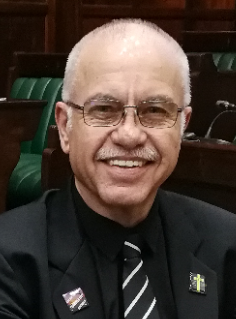FERRIER INTERNATIONAL thanks Cees Bruggemans, Chief Economist of FNB for this article which we share with you.
***************************

| The state of our animal spirits |
 |
| By Cees Bruggemans, Chief Economist FNB |
| 12 August 2009 |
 |
|
So have our animal spirits been dealt a fatal blow then?-? Was it a death blow, from which you don’t come back (rest in peace, my trusted friend), or was it a glancing blow (good for a monumental headache but not much more)? Have we in James Bond’s drink tradition merely been stirred, not shaken? Judging by events last October through December, the world certainly gave every impression of being mortally wounded. But was it after all a flesh wound in the butt rather than something more painfully accurate? Judging by the joyous, dare I say euphoric, rebirth since March on show in global equity markets, it is difficult to even find a scratch on the old carcass. But people have been known to die of fright and fear before. Cardiac arrest can be brought on by just the right kind of shock. The real economy took more time and effort than financial markets to come back from the brink. But then the latter operate in real time in a very transparent manner. The former nowadays also nearly operate in real time, courtesy of unbelievably well integrated modern communication technologies, but its data flow is as yet anything but in real time. It is still in dinosaur time. National car sales data only after month end (why not daily?). Manufacturing production and retail sales data six weeks after month end (why not weekly?). GDP data six weeks after quarter end (why not monthly?). National census data three years after mid-decade (why at all)? You get the picture? We operate mostly in the dark, a lovely invitation to those with too much imagination to pontificate on the state of the economy while having absolutely no links to the wheels, except the transparent financial markets, which themselves thrive on rumour, innuendo, gutfeel and imagination, besides fact, and not forgetting emotion (the real high-octane fuel of all human enterprise). Does it matter? But certainly, if you have read your Keynes (with a forthcoming new book by Robert Skidelsky, “Keynes: The Return of the Master” ( According to old Keynes consumption is a mere derivative. The real engine of growth and the cause of business cycle fluctuation in a closed economy is business investment and behaviour generally, blowing then hot, then cold, and a lot of one-way momentum in between. Thus the Master saw animal spirits as ruling the engine room. Which raises the question just what the state of the animal spirits in our business engine rooms really is? If potential/trend growth is 1% annually, we will double GDP every 72 years (three generations!). With any capacity expansion good for five years (a simple assembly line) or 100 years (a steel mill) that kind of demand growth shouldn’t excite too much repeat business. In such an environment, business is mostly becalmed, squeezing annually more operating productivity from technical innovation to the old existing plant to meet the very slowly expanding demand. There is no self-invigorating renewal and growth driver in sight, only endless marginal tinkering. At 3.5% growth we double GDP every 20 years. That’s better, as demand can’t be entirely met from technical tinkering to existing plant. Businesses probably have to make big expansions every decade or so (probably in the middle of a euphoric business cycle upswing once the animal spirits have become sufficiently animated by so much good news, in particular rising capacity utilization rates beyond design capacity and extrapolating such happy conditions a little too eagerly, mostly led by hope over experience). Just over 5% growth doubles GDP every 14 years. This is certainly getting exciting. One now has to make big expansion decisions nearly every three to five years, looking through the business cycle, taking ups and downs in one’s stride, ignoring deviation from trend, keeping pedal to the medal, going hell for leather – if you get my drift. Our animal spirit aggression becomes institutionalized. No more sleepy hollow stuff. One is nearly continuously expanding, like beavers in spring felling whole woods of timber. At 11% growth (the current Chinese trend pace), one doubles GDP every 6.5 years. That means big bi-annual expansions, now continuously in expansion mode, with scant attention to the state of the world. Any periodic overbuilding, as growth hiccups modestly, is fine as the spare capacity won’t be slack for long, with growth catching up ere long. So where does our business mentality currently reside on this remarkable spectrum? We used to be in 1% mode (in the greatly interrupted and slowing 1970s followed by the even more deeply interrupted and then mostly stagnant 1980s and early 1990s). There was no need for business expansion, as any growth during the short business cycle upturn was basically eroded away during prolonged slowdowns. Emphasis was on maintenance (hopefully) and technical tinkering to incorporate at least some of the advancing knowledge and productivity improvements. The danger of sales outstripping supply capacity was minimal, except in the heat of short-lived gold booms, which implied little risk of permanently losing market share due to underinvestment. It was a time of long liquid lunches, much golf, extensive holidays, no cell phones or email, though people did feel pressured (they have felt so through the ages, ever since the Vikings, Huns and Vandals came calling). We have known 5% growth momentum for periods of a few years only, last in 2004-2007 and before that in the 1960s, and before that in the late 1800s (just to show it doesn’t happen too frequently to our dynamic backwater). It is quite remarkable how that kind of growth and urgency invigorates the animal spirits and its hormone rushes improve the general complexion (in addition to the absence of liquid lunches and more exercise chasing deals and meetings, always in a great hurry). We don’t really know what it is like to do 10% growth plus. Of course, Cecil John Rhodes, Barney Barnato and friends did, but that is so long ago it is all hidden in dusty history books which the modern generation would not dare to be sampling, so how could they ever know such real excitement such as what the Chinese (and shortly the Indians, eventually, who knows) know as their daily fare? That frenetic sense of being only a Sol Kerzner ever really exhibited (and he exported himself, though lately he seems to be back for another expensive bite at the cherry). So truth be told, our kind of excitement is the 3.5% variety, our proven speed for 90 years data wise, with little in the institutional make-up suggesting anything faster soon, no matter how enticing the global windfalls, with always the ever present political danger of slip-sliding on Latino-like banana peels into stagnation (or much worse). Now, 3.5% growth can be quite exciting, although it won’t put the place ablaze. Aside of wanting to argue whether it is fast enough for our political needs (it could never be fast enough for someone in a hurry or a population suffering from rising aspirations wrapped inside a growing entitlement syndrome), it is simply the only real reality we are apparently capable of in our current mental and institutional frame. So the question is not whether we have already lost the exuberance accompanying the 5% growth spurt (we probably have in the private sector, though not in the public sector, going by our long-term infrastructure needs). The real question is whether this latest disappointment has been vicious enough to completely eradicate our natural momentum, with our collective animal spirits sinking back into a 1% kind of stagnation? On this score one can really overdo the pessimism, which of course is one outstanding characteristic of enduring backwaters. Instead, consider that we probably outperformed trend (overheated the economy) during 2007, and still even last year. But this year through 2011 we may underperform trend by a cumulative 8%. That sounds bad, but it is magically about equivalent to the outperformance of 2004-2007 when the economy was running at over 5% rather than matching its long-run average of 3.5%. A long-winded way of saying that provided we return to 3.5% growth shortly (2010-2011) and thereafter for a while modestly outperform trend (4%) so that we can again catch up with our full potential in President Zuma’s second term of office (you got to look forward in this world), we have probably not fully destroyed our only recently restored ‘natural’ 3.5% animal spirits. Our 3.5% growth performance probably sits deeply embedded in our business bones, given the many generations who became used to this pace of advance. It was an outsized event (Apartheid’s demise in the crumbling 1970s and 1980s), something you don’t encounter everyday, that brought on the 1% stagnation reality implanting it on the generation that went through it, but apparently not deep enough to rub off on following generations. At least my kids remain in a tearing hurry, which I don’t associate with 1% growth stagnation, even if it is the natural pace of our bureaucracies. For this past decade we clearly came back, phoenix-like resurrecting our 3.5% animal spirits after a generation of stagnation. At least, that’s how it feels at present. The proof will be in the eating of the pudding. The real test will come over the next twelve months, whether business in this country, just like overseas, picks itself up, dusts itself off after the great stumble, and resumes with its innate animal spirit dedication to invest and expand, perhaps no longer a 5% to 6% mentality, but certainly not degraded to a 1% mentality either. We are 3.5% people. So get on with it, will you, resurrect those capex budgets, stop firing and start hiring, invest at your natural pace (and a bit extra ere long for catch up). We are the 3.5% generation and we should act accordingly! Unless you aspire to 6%-9% and want to overtake Stuff you probably rather invest in your golf handicap.-?-?-? -? Cees Bruggemans is Chief Economist of First National Bank. Register for his free e-mail articles on www.fnb.co.za/economics-? |
 |





